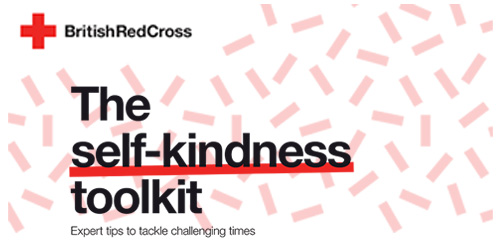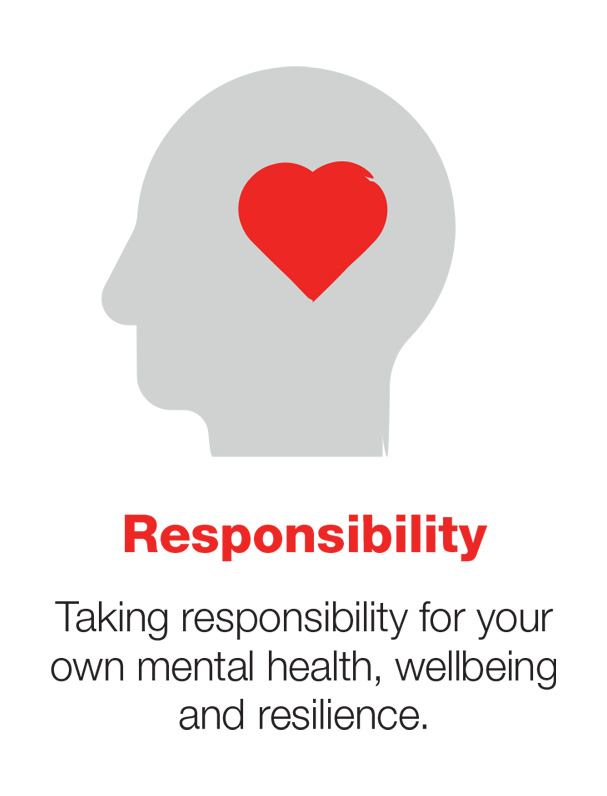The self-kindness toolkit: Part 1: Responsibility

The Self-kindness toolkit: Expert tips to tackle challenging times
The British Red Cross has provided a toolkit full of useful, practical tips that you can use to help build your resilience and confidence and to take control when faced with challenging situations.
6 Rs of resilience
The 6 Rs of resilience can prepare you and your family so that you are better able to bounce back when faced with a difficult situation.
- Responsibility: Taking responsibility for your own mental health, wellbeing and resilience.
- Reflection: Reflecting on how you are, what is happening and how you are feeling about things.
- Relaxation: Relaxing in a way that suits you, such as gardening, reading a book and mindfulness practice.
- Relationships: Noticing the things we can take responsibility for can help to build confidence in ourselves and help us to feel more in control.
- Refuelling: Eating a healthy diet, and being conscious of alcohol intake.
- Recreation: Taking regular exercise, and having fun.
Over a series of articles, you will find tips on each of the 6 Rs. This article focuses on Responsibility.

Circles of control
Being worried or anxious can mean feeling like you have little control over a situation or how to change it. Feeling uncertain can stop you doing many things that might help you feel less concerned.
Circles of control is used by many people and are a tried and tested way to feel more in control of a situation. This means you can focus on what you can do and what you can't.
Everything can seem a little uncertain right now. A way to help is to focus on things we can control.
- Write down all the things that you worry about, or might worry about in the future, in a list.
- Draw two circles on a piece of paper.
- Using your list, organise the worries you have control over in the centre circle.
- Think of one thing you can do to ease one of these central worries.
Problem-solving
- Sometimes problems can seem so large that it is hard to know where to start.
- Break the problem up into smaller parts. For example, going shopping can be broken into: making a list, organising transport, getting enough bags ready, and so on.
- You can solve smaller tasks more quickly and easily.
- You can then solve the whole problem more easily.
- Think of a problem where doing this might help. How can you break it up?
Making decisions confidently
The pathway below shows how you can be confident when making decisions.
- How do I feel? Write down how you feel about making this decision
- What is stopping me from deciding? Remember, do what is best for you, not others. What is that?
- What is good and bad about this decision? Write down all the reasons for and against what you are thinking of doing. Use this to decide what to do.
- Recognise your fears. It is normal to be worried about making changes. Say that you will make a decision.
- Set a time limit. Give yourself time to make a good decision - but also set a time limit for making it.
- Think about your decision. What was easy or difficult about making this decision? What will you do differently next time?
Write down how you can use these steps in the future.
Everyday items you can use for first aid at home
Learning and knowing first aid allows us to look out more one another in our communities. There are many alternative ways you can provide first aid treatment using everyday items.
Burns
Cool the burn with running water or any cold liquid, such as juice, beer, or milk. The aim is to cool the area as quickly as possible, using whatever cold liquid is available. Remember: It should be cooled for at least 20 minutes for the treatment to be effective. Use a clean plastic carrier bag, cling film, sandwich/freezer bag or similar to cover the burn once cooled. These types of items will not stick to the burn and will create a barrier to stop infection. Plastic bags are particularly useful for covering a burned hand or foot.
Bleeding heavily
If you don't have dressing pads to put pressure on the wound use a t-shirt, tea towels or even the person's own hand. All these items can be used to put pressure on the wound and stop or slow down the flow of blood.
Head injury
If you don't have an ice pack use a bag of frozen peas wrapped in a towel to cool the affected area.
Broken bone
If you don't know what sort of padding to use to support a broken bone use items of clothing, blankets or simply hold the injured part yourself.
Hypothermia
Give the person hot food like soup or use towels and sheets if you don't have blankets.
First aid at your fingertips
Support your first aid learning and keep your skills refreshed with the British Red Cross first aid app.
Download all these tips and more in The Self-kindness Toolkit.
For more information please contact the Corporate Communications Team.


/prod01/wlvacuk/media/departments/digital-content-and-communications/images-2024/240328-Varsity-Line-Up-Resized.jpg)
/prod01/wlvacuk/media/departments/digital-content-and-communications/images-18-19/220325-Engineers_teach_thumbail.jpg)
/prod01/wlvacuk/media/departments/digital-content-and-communications/images-2024/240423-Additive-Research-Centre-Launched.jpg)
/prod01/wlvacuk/media/departments/digital-content-and-communications/images-2024/240320-Uzbekistan-Resized.jpg)
/prod01/wlvacuk/media/departments/digital-content-and-communications/images-2024/240229-The-Link-Resized.jpg)
/prod01/wlvacuk/media/departments/digital-content-and-communications/images-2024/240416-Abi-Dare-Resized.jpg)